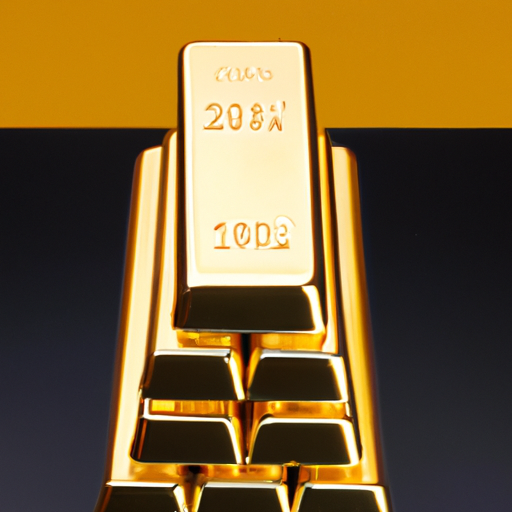So you’re thinking about investing in gold, huh? Well, let me tell you, when it comes to gold investments, timing is everything. The impact of your time horizon, whether it’s short-term or long-term, can have a significant effect on your investment outcomes. In this article, we’ll dive into the time factor and explore how the length of your investment plays a crucial role in determining the potential returns and risks associated with gold. So grab a cup of coffee, sit back, and get ready to unravel the mysteries of the time factor in gold investments. It’s about to get interesting!
1. Introduction
Welcome to our latest blog post on gold investments! In this article, we will be focusing on the impact of time horizon when investing in gold. Whether you’re a beginner or a seasoned investor, understanding how time can influence your investment decisions is crucial. So, let’s dive right in and explore the various aspects of gold investments and how they relate to different time horizons.
2. Overview of Gold Investments
Gold has been a valuable and sought-after asset for centuries. Its scarcity, durability, and universal appeal make it an attractive investment option. Gold investments can provide a hedge against inflation, protect wealth in times of economic uncertainty, and serve as a store of value. Individuals and institutions alike flock to gold as a way to diversify their portfolios and safeguard their assets.
3. Factors Influencing Gold Prices
Before delving into the impact of time horizon, it’s important to understand the key factors that influence gold prices. These factors can have a significant impact on the value of gold and, consequently, your investment returns.
3.1. Global Economic Conditions
Global economic conditions play a crucial role in determining the price of gold. During times of economic instability or recession, investors often turn to gold as a safe haven, leading to an increase in demand and, subsequently, a rise in prices. Conversely, when the economy is booming, and risk appetite is high, the demand for gold may decrease, resulting in lower prices.
3.2. Political Instability and Geopolitical Events
Political instability and geopolitical events also have a profound impact on gold prices. Uncertainty caused by political tensions, conflicts, or major global events can drive investors towards the perceived safety of gold. These events can create volatility in financial markets, increasing the demand for gold and driving its prices up.
3.3. Inflation and Currency Fluctuations
Inflation and currency fluctuations are essential factors to consider when investing in gold. Gold is often viewed as a hedge against inflation because its value tends to rise alongside the cost of living. Additionally, when a country’s currency weakens, gold prices typically rise as it becomes more expensive for international investors to purchase gold in that currency.
4. The Significance of Time Horizon
The time horizon of your investment refers to the length of time you plan to hold on to your gold investment. Different investment strategies and instruments are more suitable for specific time horizons. The impact of time horizon on gold investments is particularly significant due to the fluctuating nature of gold prices.
5. Short-Term Gold Investments
For those with a short investment time horizon, there are a few options to consider.
5.1. Trading Gold on the Stock Market
One way to invest in gold over a short time frame is through trading gold on the stock market. This involves buying and selling gold exchange-traded funds (ETFs) or gold mining company stocks. Trading gold on the stock market allows for quick liquidity and the possibility of capitalizing on short-term market movements.
5.2. Gold ETFs and Mutual Funds
Investors looking for convenience and flexibility in their short-term gold investments often turn to gold ETFs and mutual funds. These investment vehicles offer exposure to the price movements of gold without the need for physical ownership. However, it’s important to note that fees associated with these investments may impact overall returns.
6. Medium-Term Gold Investments
For investors with a medium time horizon, physical gold bullion and coins can be an appealing option.
6.1. Physical Gold Bullion and Coins
Owning physical gold in the form of bullion bars or coins provides investors with a tangible asset that can be stored securely. This medium-term investment strategy allows individuals to benefit from potential price appreciation over time while having the option to sell their physical gold when desired.
6.2. Gold Bars and Rounds
Similar to physical gold bullion and coins, gold bars and rounds offer medium-term investors the opportunity to own physical gold. These bars and rounds come in various sizes and weights, making it easier for investors to purchase gold in line with their budget and goals.
7. Long-Term Gold Investments
Investors with a long time horizon may consider gold investments that offer potential growth and stability over time.
7.1. Gold IRA Accounts
A gold IRA (Individual Retirement Account) allows investors to hold physical gold within their retirement portfolio. This long-term investment option provides the benefit of tax advantages, allowing individuals to diversify their retirement funds with gold. Gold IRA accounts are typically used as a hedge against inflation and economic uncertainty in the long run.
7.2. Gold Mining Stocks
Investing in gold mining stocks can be a long-term strategy that offers exposure to the gold industry’s potential growth. Gold mining stocks tend to be more volatile than physical gold but can yield higher returns if the mining company is successful in discovering or increasing gold reserves.
8. Risk Factors to Consider
When investing in gold, it’s essential to be aware of the potential risks involved. Here are a few key risk factors to consider:
8.1. Market Volatility
Gold prices can be highly volatile, which can result in rapid and significant price fluctuations. This volatility may lead to short-term losses for investors, particularly those with a short time horizon.
8.2. Economic Recession
During an economic recession, the demand for gold tends to increase due to its perceived safe-haven status. However, if the recession is prolonged, it can negatively impact the overall market sentiment, resulting in a decline in gold prices.
8.3. Regulatory and Legal Risks
Potential changes in government regulations and legal risks, such as restrictions on gold exports or changes in taxation policies, can affect the value and accessibility of gold investments. It’s important to stay informed on the regulations and laws governing gold investments in your particular jurisdiction.
9. Diversification and Gold Investments
Diversification is a fundamental principle in investment strategy, and gold investments can play a valuable role in diversifying a portfolio.
9.1. Portfolio Allocation
Including gold in a diversified investment portfolio can help reduce overall risk by providing a counterbalance to other asset classes. The allocation to gold will depend on individual risk tolerance, investment goals, and time horizon.
9.2. Gold as a Hedge against Market Downturns
Gold has historically served as a hedge against stock market downturns and economic crises. During times of market volatility and uncertainty, gold prices tend to rise, providing investors with a defensive asset that can help mitigate losses in other parts of their portfolio.
11. Conclusion
As we wrap up our discussion on the impact of time horizon on gold investments, it’s essential to remember that every investor’s goals and risk tolerance are unique. Whether you’re investing in gold for the short, medium, or long term, understanding the factors influencing gold prices and assessing the associated risks is crucial. By diversifying your portfolio and considering the suitability of different gold investment options, you can make informed decisions that align with your financial objectives.



